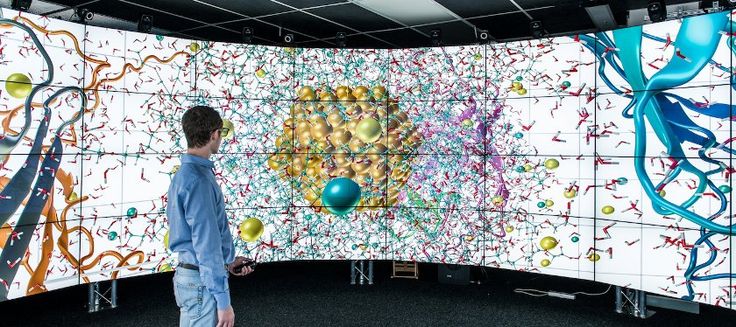Fortune 500 companies are investing staggering amounts into data visualization. Many have opted for Tableau, Qlik, MicroStrategy, etc. but some have created their own in HTML5, full stack JavaScript, Python, and R. Leading CIOs and CTOs are obsessed with being the first adopters in whatever is next in data visualization.
The next frontier in data visualization is clearly immersive experiences. The 2014 paper “Immersive and Collaborative Data Visualization Using Virtual Reality Platforms” written by CalTech astronomers is a staggeringly large step in the right direction. In fact, I am shocked that 1 year later I have not seen a commercial application of this technology. You can read it here: http://arxiv.org/ftp/arxiv/papers/1410/1410.7670.pdf
The key theme that I hear at technology conferences lately is the need to focus on analytics, visualization and data exploration. The advent of big data systems such as Hadoop and Spark has made it
Picture Source: VR 2015 IEEE Virtual Reality International Conference
possible – for the first time ever – to store Petabytes of data on commodity hardware and process this data, as needed, in a fault tolerant and incredibly quick fashion. Many of us fail to understand the full implications of this inflection point in the history of computing.
Storage is decreasing in cost every year, to the point where you can now have multiple GB on a USB drive that 10 years ago you could only store a few MBs. Gigabit internet is being installed in cities all over the world. Spark uses the concept of in memory distributed computation to perform at 10X map reduce for gigantic datasets and is already being used in production by Fortune 50 companies. Tableau, Qlik, MicroStrategy, Domo, etc. have gained tremendous market share as companies that have implemented Hadoop components such as HDFS, Hbase, Hive, Pig, and Map Reduce are starting to wonder “How I can I visualize that data?”
Now think about VR – probably the hottest field in technology at this moment. It has been more than a year since Facebook bought Oculus for 2Billion and we have seen Google Cardboard burst onto the scene. Applications from media companies like the NY Times are already becoming part of our every day lives. This month at the CES show in Las Vegas, dozens of companies were showcasing virtual reality platforms that improve on the state of the art and allow for a motion-sickness free immersive experience.
All of this combines into my primary hypothesis – this is a great time to start a company that would provide the capability for immersive data visualization environments to businesses and consumers. I personally believe that businesses and government agencies would be the first to fully engage in this space on the data side, but there is clearly an opportunity in gaming on the consumer side.
Personally, I have been so taken by the potential of this idea that I wrote a post in this blog about the “feeling” of being in one of these immersive VR worlds.
http://sarcastech.tumblr.com/post/136459105843/data-art-an-immersiv…
The post describes what it would be like to experience data with not only vision, but touch and sound and even smell.
Just think about the possibilities of examining streaming data sets, that currently are being analyzed with tools such as Storm, Kafka, Flink, and Spark Streaming as a river flowing under you!
The strength of the water can describe the speed of the data intake, or any other variable that is represented by a flow – stock market prices come to mind.
The possibilities for immersive data experiences are absolutely astonishing. The CalTech astronomers have already taken the first step in that direction, and perhaps there is a company out there that is already taking the next step. That being said, if this sounds like an exciting venture to you, DM me on twitter @Namenode5 and we can talk.
